
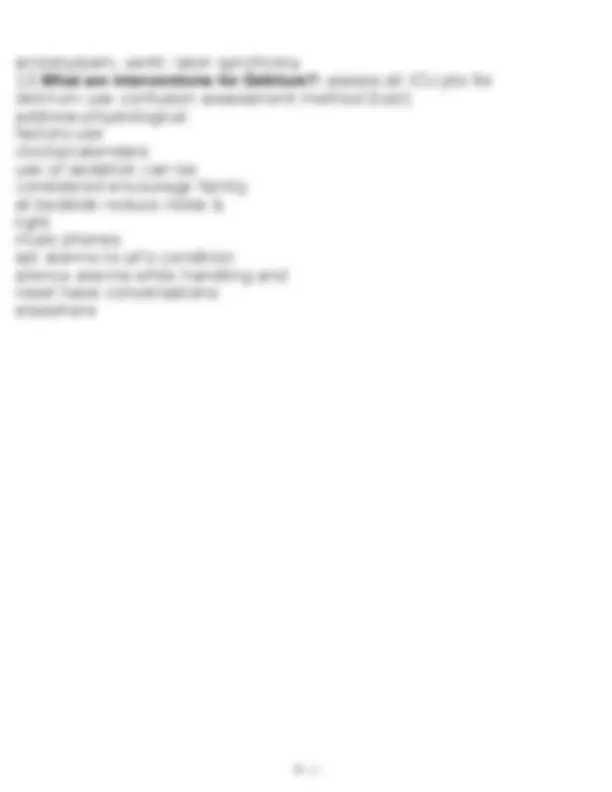
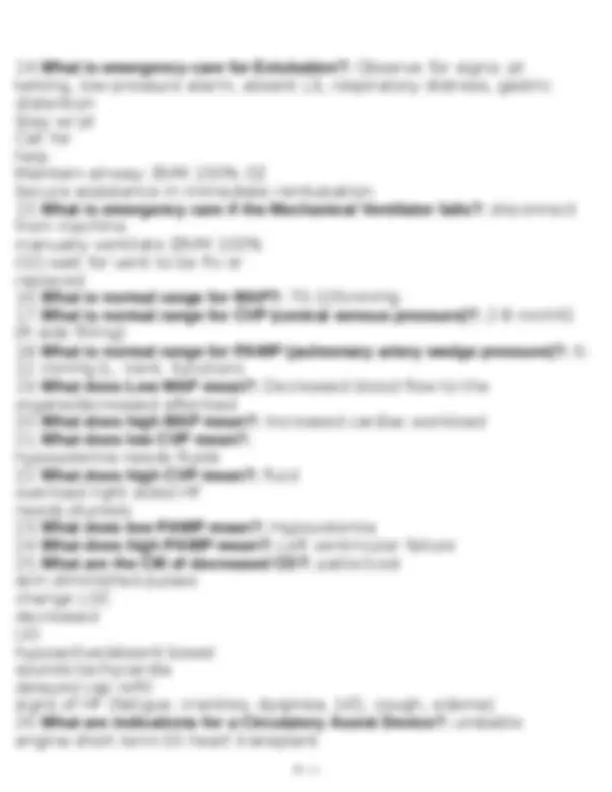

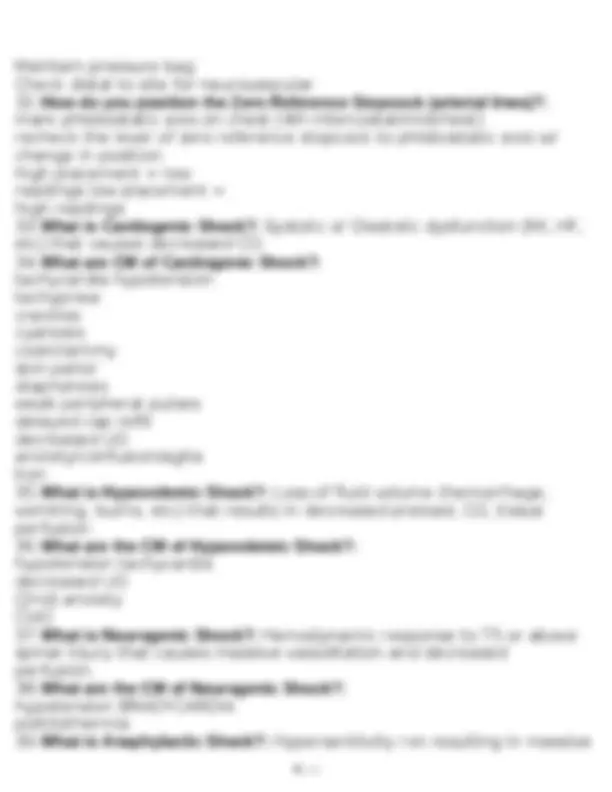



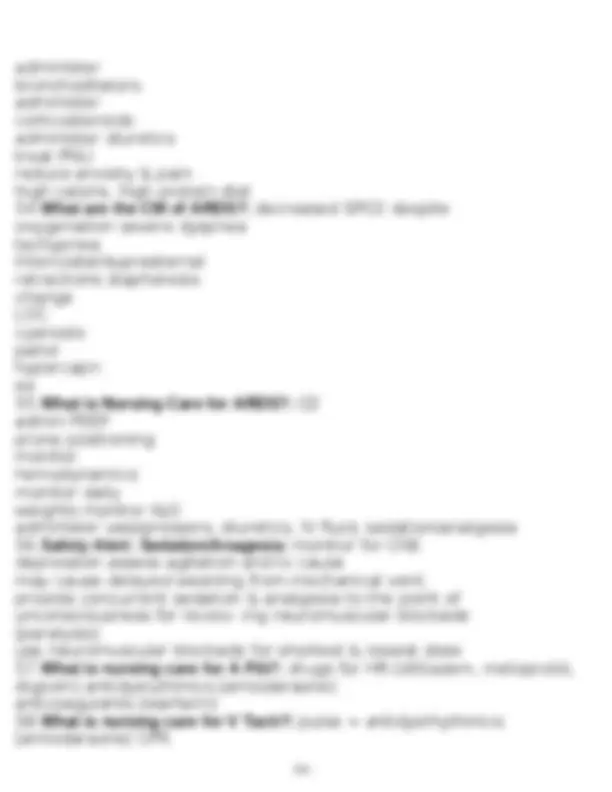

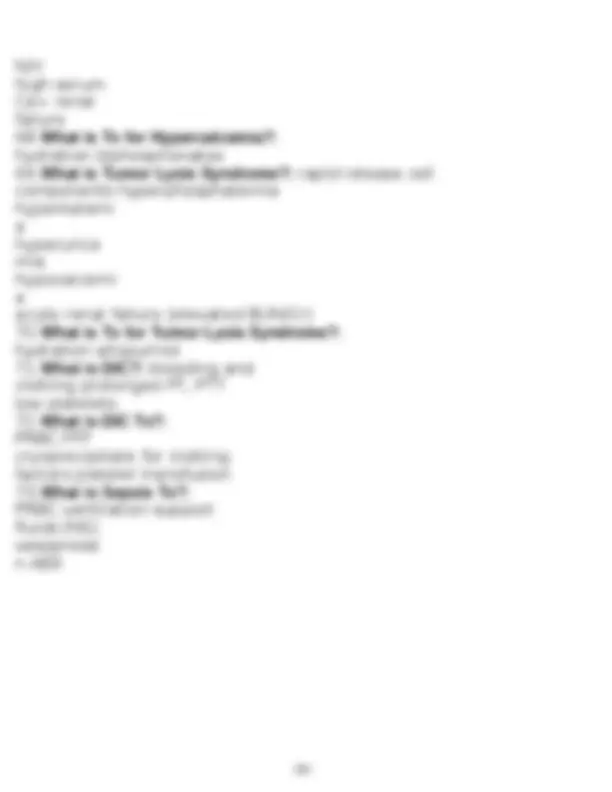


Study with the several resources on Docsity

Earn points by helping other students or get them with a premium plan


Prepare for your exams
Study with the several resources on Docsity

Earn points to download
Earn points by helping other students or get them with a premium plan
Community
Ask the community for help and clear up your study doubts
Discover the best universities in your country according to Docsity users
Free resources
Download our free guides on studying techniques, anxiety management strategies, and thesis advice from Docsity tutors
Nursing Complex Care Exam 1 Study Guide
Typology: Exams
1 / 18

This page cannot be seen from the preview
Don't miss anything!











hyperoxygenate before & after each pass (30sec) limit pass to 10 sec assess SPO2 and ECG use 100- 120mmHg use aseptic technique
acute MI cardiogenic shock pre/intra/postoperative cardiac surgery
Monitor for S/S of infection Change tubing & bag q 96hrs Perform Allen test (check radial/ulnar arteries)
Maintain pressure bag Check distal to site for neurovascular
wheezing/ stridor flushing pruritus hives angioede ma
90%
(NS) draw labs control bleeding assess injuries vasopressors if hypotension persists insert catheter
incentive spirometry hydration humidification chest PT suctioning ambulation HOB elevated tripod positioning
administer bronchodilators administer corticosteroids administer diuretics treat PNU reduce anxiety & pain high calorie, high protein diet
weakness dysrhythmias polyuria/noctur ia anorexia